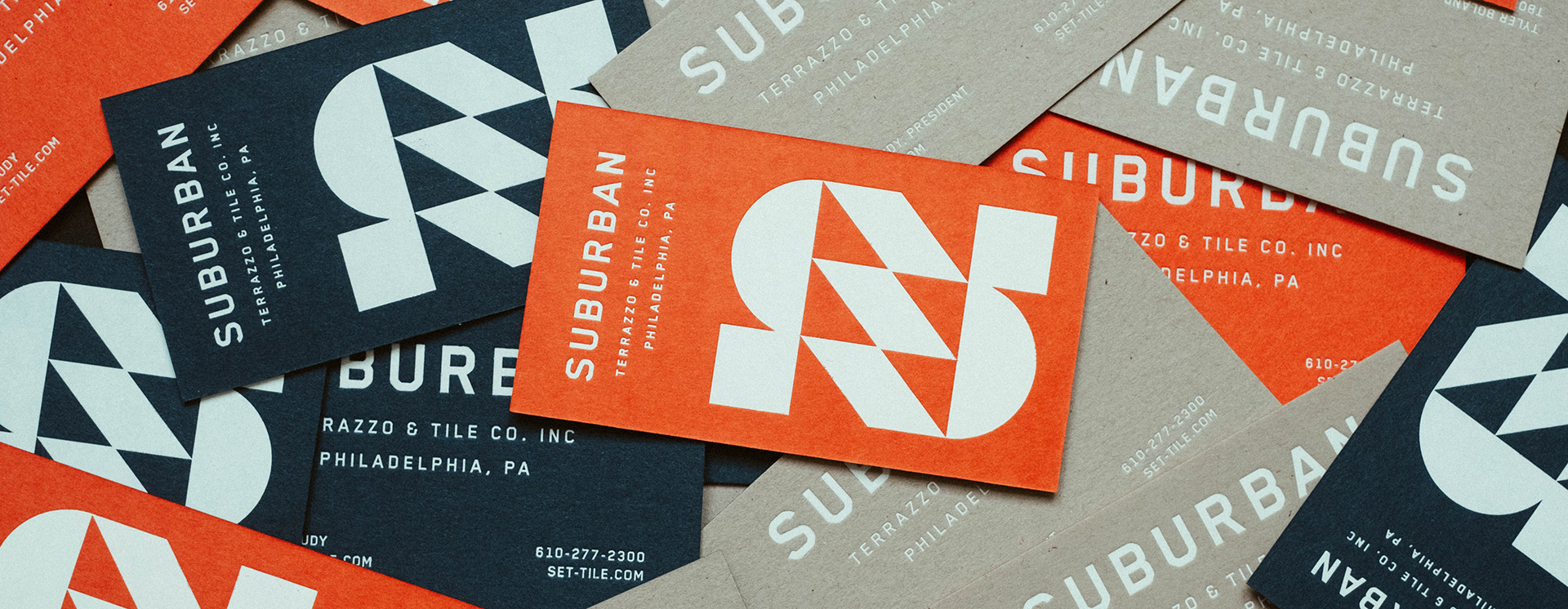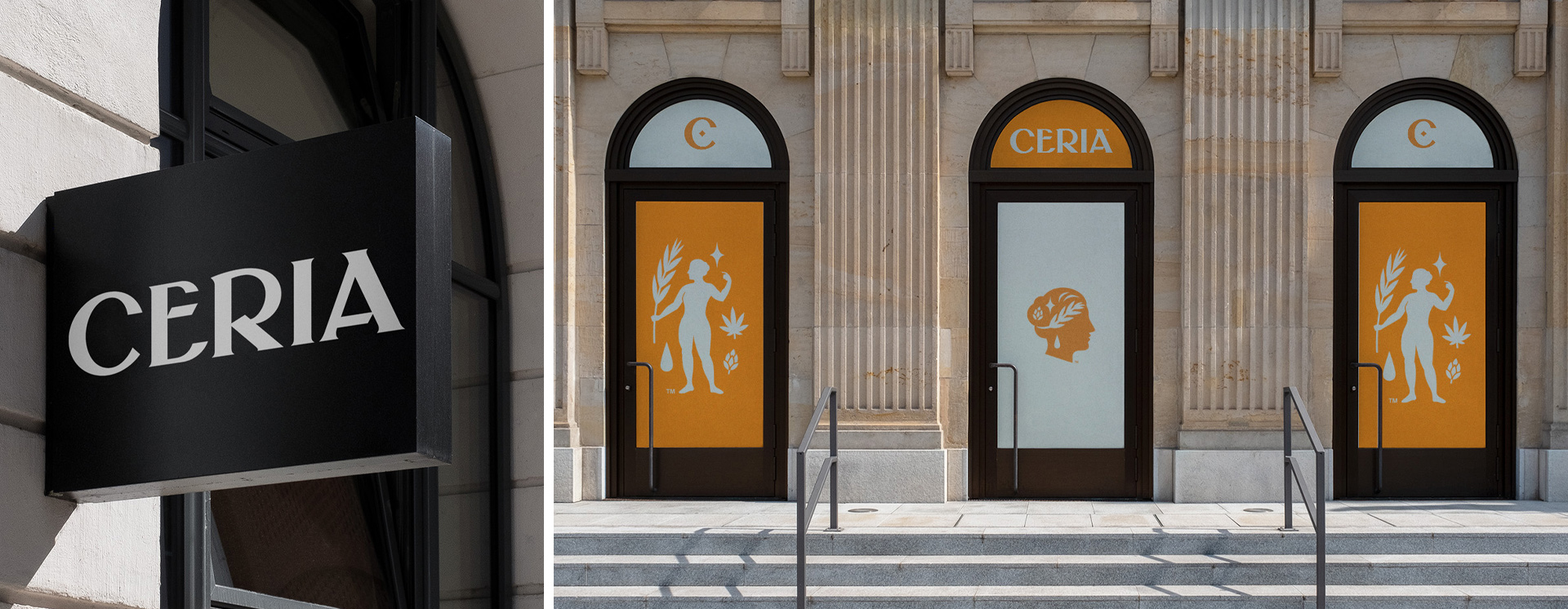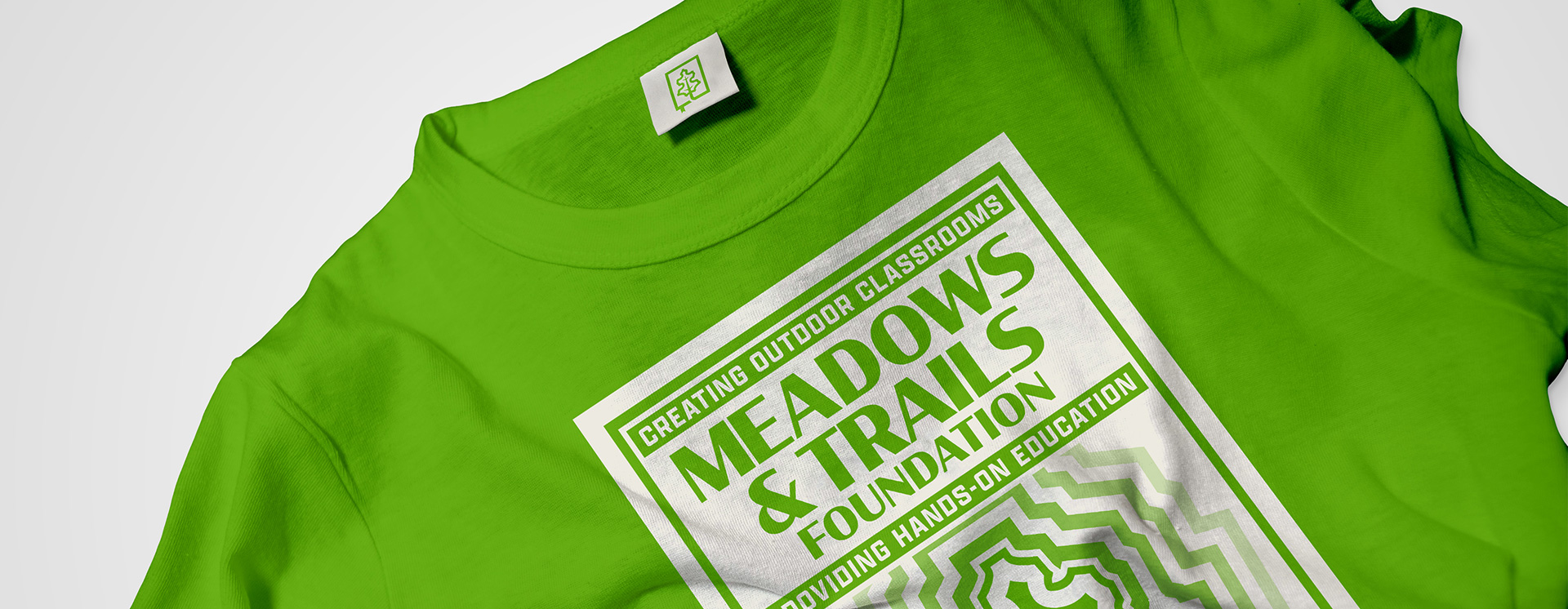Previously in our Entrepreneur’s Guide, we discussed what branding is (part one) and what elements make up your startup’s visual identity (part two). Next, we will discuss how those same materials can be taken and applied to physical items you’ll use to market your startup.
Marketing Collateral
While your startup likely focuses on digital goods or services (SaaS, for example), putting as much thought and care into physical marketing materials as your online presence is essential. You now have the perfect opportunity to use your style guide, which likely includes your brand’s colors (learn more about designing digitally vs. for print here), typefaces, etc. Your goal is to make sure everything ends up feeling like one unit.
Stationery – It’s always important to have the stationery essentials: Letterheads, Envelopes, and Business Cards. A simple thank you card to colleagues or customers on a branded letterhead can make all the difference when trying to make a good impression. Carry your logo over to your envelopes for official correspondence as well. Services like USPS’s Informed Delivery Service are becoming more widely available. You should make sure any mail is easily recognizable. If onboarding new staff members, send a welcome package full of branded goodies. It’ll drum up excitement and provide a better experience as your employees transition into their roles.
If you plan on attending conferences, operating booths, or hosting meetups, you’ll need to provide attendees with pamphlets or brochures. They should give a brief but concise outline of your startup’s offerings, philosophies, and communication details.

Suburban Enterprises’ business cards use a great mix of the company’s colors to create a bold statement.
SWAG – Marketing materials don’t need to be only paper products, though! Choosing a wide variety of unique and high-quality items are great ways to get your startup’s name out there while keeping people immersed in what makes your startup special. Don’t skimp on the details. The worst moments are when you’re putting everything together, and something sticks out like a sore thumb because it doesn’t fit what you’ve built or the quality doesn’t match.
Some simple items, such as stickers, can excite your booth’s visitors, especially if they already have a positive image and connection to your brand. It offers another means for you to advertise by having your sticker on their laptop or notebook.
Packaging – Let’s not forget that if your startup does indeed include a product, packaging can bring it to the next level. Every so often, this blog post by Trung Phan circulates on social media, where he discusses why people are obsessed with Apple’s product boxes (including himself). Apple has spent countless hours developing packaging that represents its core values (high quality, well-designed, etc.) and gives their customer a positive opening experience. The full-color, minimalistic branded box and the air pocket that offers some resistance when opening have been thought through carefully. The rationale is that the package is the last thing a customer feels before seeing the phone, so the box must complement the quality of the device.
Signage
Exterior – Most startups are enjoying the remote working lifestyle, so an office space and the signs required aren’t a number one priority anymore. But if you decide to have a flagship location, your signage needs to be eye-catching, clear, and accurate. There have been too many times where I’ve seen places with a sign near a door only to walk up and find out it is just an emergency exit.

Examples of exterior signage for Ceria Brewing Company, utilizing their logo and various supporting illustrations.
Interior – Your brand should flow to the inside of your office as well. Accents of your startup’s colors, patterns, or supporting elements can help tie an office space together, making it more welcoming. And again, make sure everything is labeled correctly with clear directions. It is not only the law in some cases, such as emergency exits, but it is also less confusing if someone is visiting for the first time.
Things can get trickier if you’re on the event circuit and plan on setting up booths. Depending on your needs and given space, something as simple as a branded event tent and kiosk can do a lot. If your budget allows, you can go bigger with custom-fabricated booths that fit your specific needs.
Vehicle Livery – If your startup requires service vehicles, decals such as wraps can give your company an excellent opportunity to flex your branding. Each vehicle is a moving billboard that can be changed and updated with relative ease. So if you have a new campaign or service you’re looking to push, replacing a vehicle wrap may be the right approach when advertising around a city at a relatively low cost compared to a billboard. Plus, you’re at the advantage of it being able to go to multiple locations. Keep in mind that many states have laws for a vehicle’s lettering. One of New Jersey’s requirements, for instance, is that the lettering can be no less than three inches tall.
Apparel & Uniforms
Your startup’s branding has already shown how flexible it can be. You’ve used it on various marketing goods, including letterheads, brochures, and stickers. Your booth is inviting and stands out amongst a sea of monotony. The next thing to tackle is apparel. Branded uniforms and staff-only items with fun, exclusive designs are an interesting way to excite your employees and build morale and team spirit. Giving out event exclusive items, or rewarding customers with high end gear, can show your appreciation. Here is a short list of production methods that you can use to customize your company’s apparel:
- Screen Printing
- Embroidery
- Sublimation
- Heat Transfers
- Cut & Sew

A t-shirt design for volunteers and supporters of a non-profit building environmental education experiences in cooperation with schools.
With each one of these methods lies different opportunities to advertise your brand. If you’re looking for something simple: blank t-shirts, hoodies, and hats come in an array of colors, fabrics, and fits. You can choose from a wide selection, then have them customized to your needs.
Conclusion
Once your visual identity is completed, you can more readily carry your startup’s branding to your various avenues of marketing, including collateral, signs, and apparel.
In Part 4, we’ll be talking about your website or app and how important they are to your startup.
All rights to the graphics in this blog post are owned by their respective company. Abuv, LLC claims no rights to them, with the exception of Meadows and Trails Foundation.